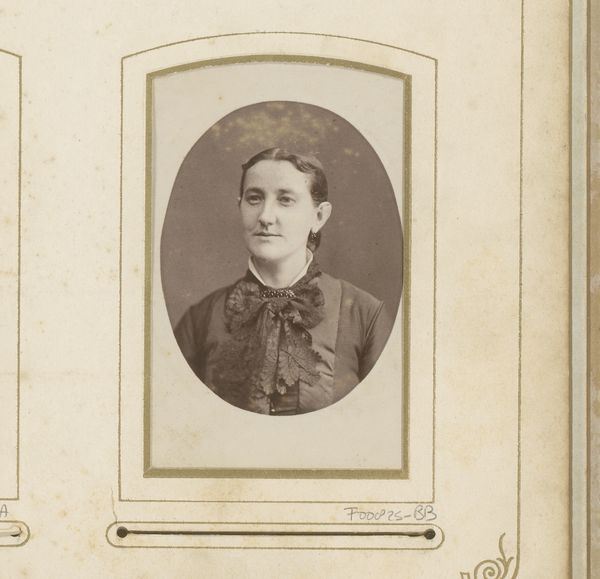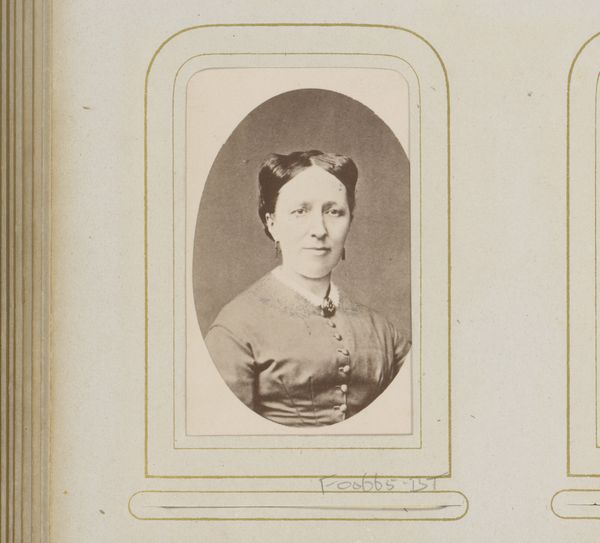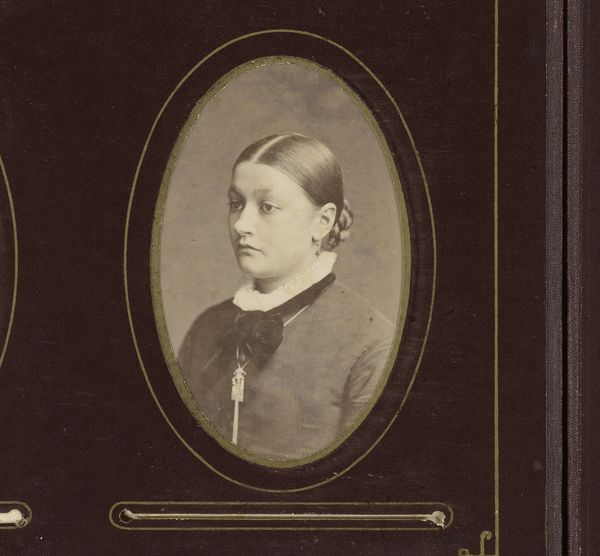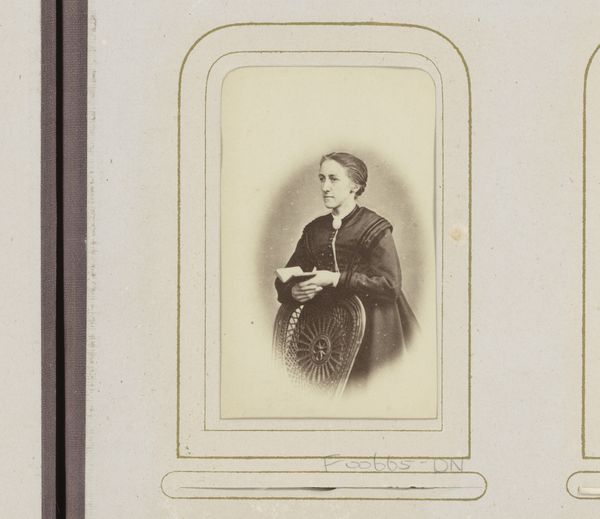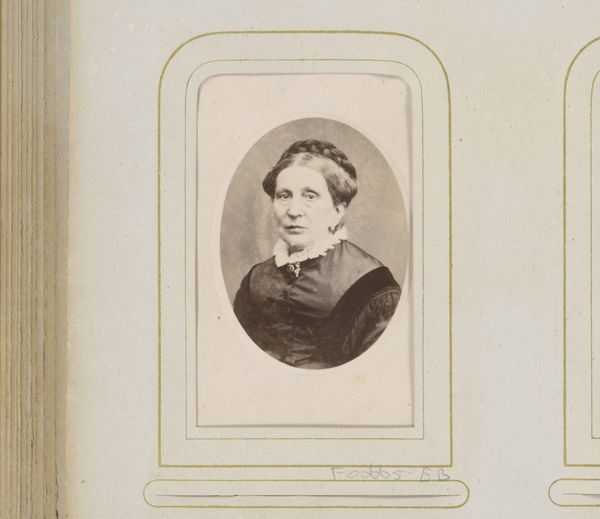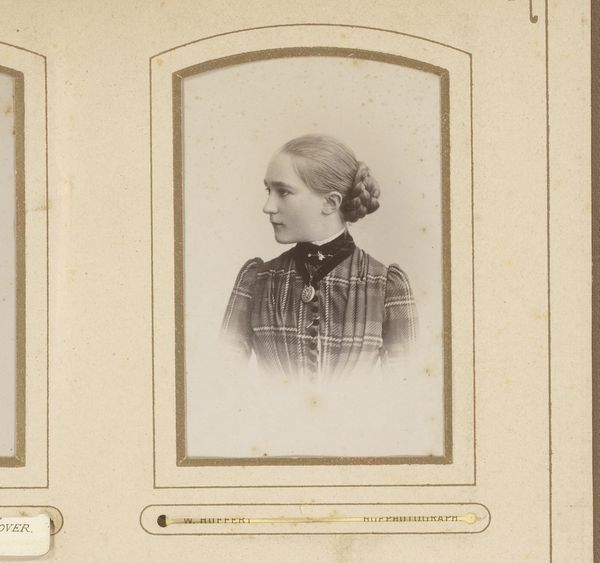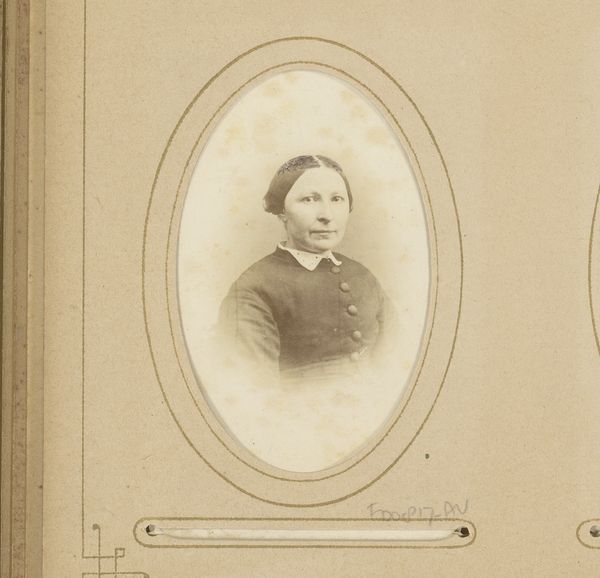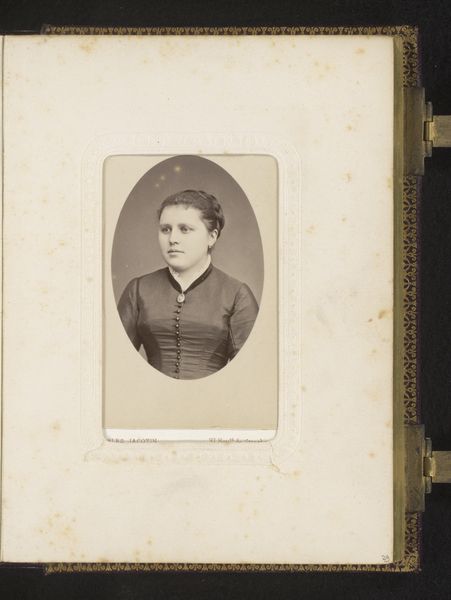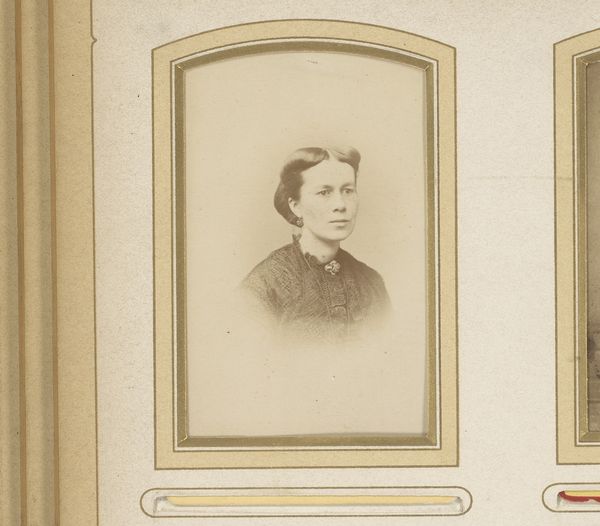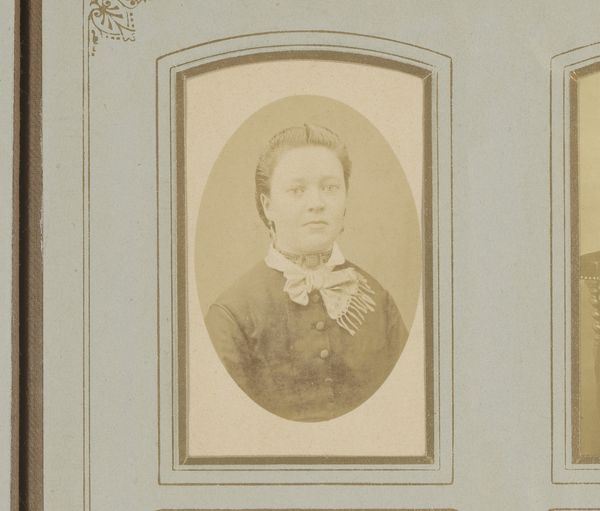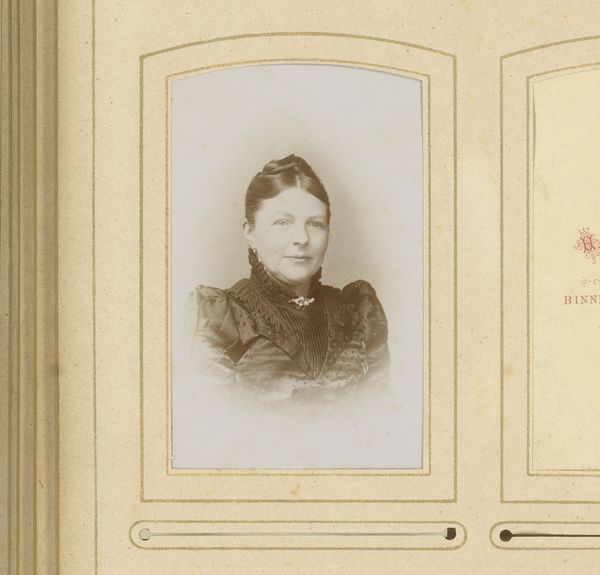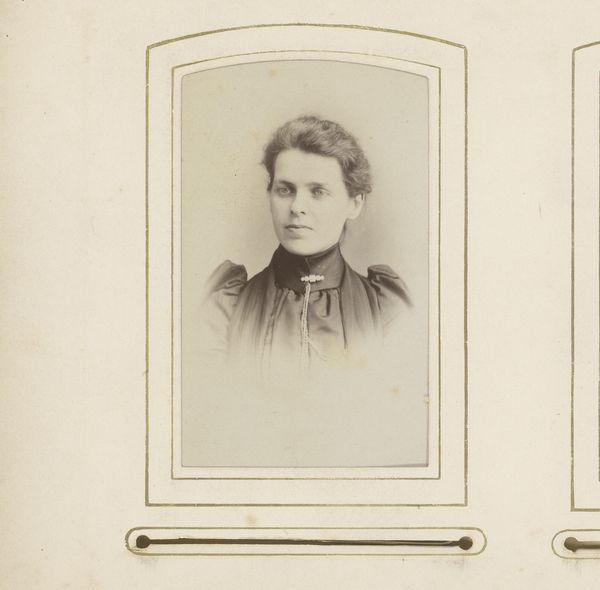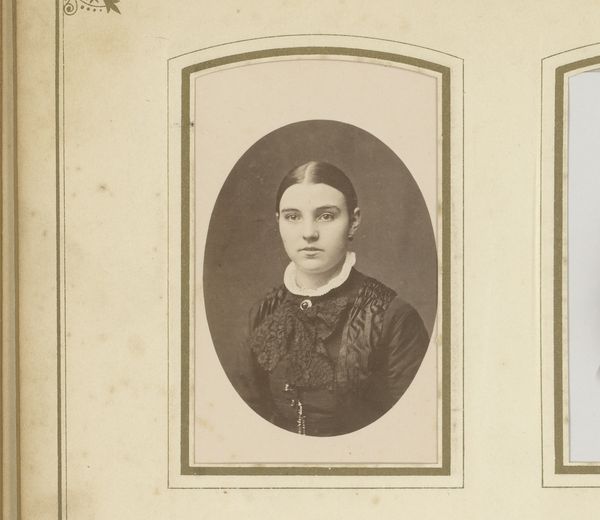
photography, albumen-print
#
portrait
#
photography
#
historical photography
#
19th century
#
albumen-print
Dimensions: height 86 mm, width 53 mm
Copyright: Rijks Museum: Open Domain
Curator: Let’s turn our attention to this striking, untitled portrait of a woman, an albumen print attributed to De Lavieter & Co., dating from sometime between 1865 and 1903. Editor: Wow, there's a solemn mood here. It makes me think about old photographs found tucked away in forgotten places—a hushed, intimate stillness. The light is so gentle, almost hesitant. Curator: It's interesting that you pick up on that stillness. Looking at her composure, it makes me think about the social constraints placed upon women of that era. This photograph likely represented a carefully constructed image of respectability. The clothing alone speaks volumes about societal expectations. Editor: Absolutely, and her gaze avoids direct eye contact, as was typical. But there’s something about that slightly averted look... Is it just my imagination, or does it hint at something more—a touch of quiet defiance, or perhaps just weariness? The oval framing almost feels like she is peering through a porthole into the past. Curator: That reading is astute. There are layers here. While the photographic conventions of the time certainly dictated certain poses and expressions, within those constraints, we often find subtle negotiations of identity. Consider, for instance, the detailed rendering of her dress and jewelry versus the comparatively subdued background. There's a distinct power dynamic at play, but her individual presence persists. Editor: It’s like she's letting us catch her when she's not quite "on guard," despite sitting for an official portrait. I wonder what she would think if she knew we were dissecting her image now? What secrets does this image withhold, not only of the subject's story but of the story behind this piece made by De Lavieter & Co? Curator: Precisely. These images, beyond their surface representation, invite us to question what narratives were prioritized, what voices were silenced, and what perspectives remain overlooked in historical accounts. This work and others can open new opportunities for critical inquiry, especially around representation. Editor: It's a photograph, yet it feels more like a whispered secret, one that begs us to listen closely. Looking at it fills me with melancholic delight. Curator: I agree. Its impact lies precisely in its power to evoke emotion and encourage dialogue with the past and present.
Comments
No comments
Be the first to comment and join the conversation on the ultimate creative platform.

